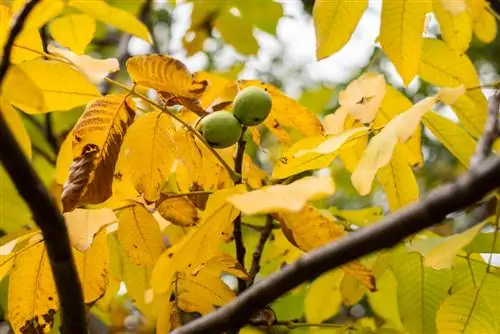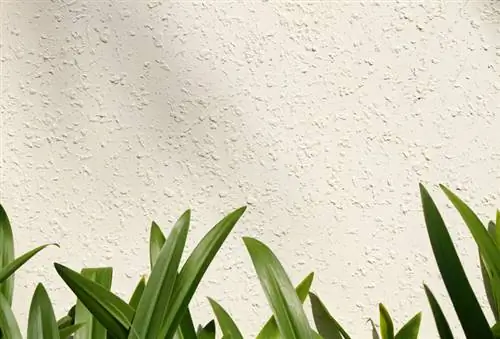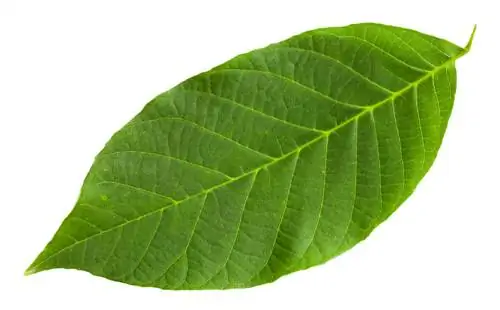- Author admin [email protected].
- Public 2023-12-16 16:46.
- Last modified 2025-01-23 11:22.
The most beautiful things can be made and crafted from autumn leaves: creative garden decorations, winter quarters for small animals. In addition, leaves serve a practical purpose. The leaves are suitable, for example, as frost protection on flower beds or for enriching the soil. In this regard, there are a few things you need to keep in mind when it comes to walnuts. You can find out more on this page.

Compost walnut leaves?
In contrast to other tree species, the leaves of the walnut are unfortunately only suitable for composting to a limited extent. Two important properties are responsible for this:
- Walnut leaves only rot slowly
- Walnut foliage is poisonous in large quantities
What slows down rotting?
The leaves of the walnut tree contain tannins, so-called tannins. These are essential oils that are highly valued in medicine, but pose a problem when composting walnut leaves.
Note: Have you always wondered why small plants hardly thrive under your walnut tree? The tannins are also responsible for this. The rainwater washes the substances out of the leaves and sends them into the ground. An underplanting of a walnut grows poorly, similar to conifers.
Which plants should not be mulched with walnut?
The tannic acid contained in the following plants can be fatal:
- Summer flowers
- Onion family
- Perennials
If you are unable to use the walnut leaves due to your choice of plant, you will find helpful information on how to dispose of the leaves here.
Alternatives
The separate compost heap
If you mix the walnut leaves with your other compost waste, the entire decomposition process will slow down. Nevertheless, you do not necessarily have to dispose of walnut leaves. However, you should separate the leaves from the remaining residue in a separate compost heap. There are even many plants that enjoy acidic compost. This special enrichment is particularly used in bog beds. Add the decomposed walnut leaves to the substrate of:
- hydrangeas
- Heather plants
- Rhododendron
- numerous forest plants






